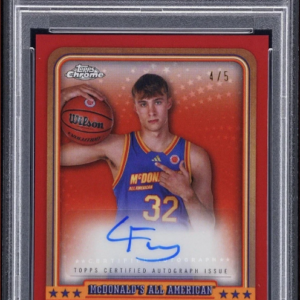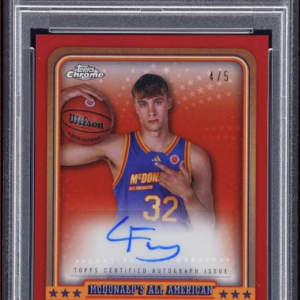Just as the 2025 Major League Baseball season dawns with the Atlanta Braves facing off against the San Diego Padres, another kind of contest is underway off the field, lending a different pulse to America’s favorite pastime—a trading card frenzy is unfolding with the fervor of a playoff race. Baseball card collectors, fueled by a potent mix of nostalgia and speculation, are partaking in a competitive dance of cardboard, hunting for the holy grails of modern collectibles: rookie cards of fledgling players whose futures in the sport are as untested and unpredictable as the first pitch of spring.
No sooner had the player rosters been announced for Opening Day than collectors leaped into action, their enthusiasm irresistibly drawn to the tantalizing prospect of unearthing the next big thing. For true aficionados, this is no mere past-time; it’s an investment paradigm with a tactile twist, a way to blend sentimentality with shrewd financial foresight.
In the heart of Atlanta, Cards HQ wears its status as the world’s largest card shop with pride and a touch of humility, acknowledging the fine balance between bonanza and bedlam that such success can bring. Even for an establishment of its caliber, the current wave of enthusiasm for rookie cards, especially those of lesser-known players, has been challenging to match.
Standing amidst the chaotic clutter, Ryan Van Oost, the shop’s manager, gestures toward what once was an orderly trove of Atlanta Braves memorabilia. Now, the section looks like an apocalyptic scene, stripped bare under the siege of burrowing collectors. “We experienced a whirlwind over the weekend,” Van Oost confesses, his eyes gleaming with the wonder and weariness of a man who’s witnessed a cardboard gold rush.
Understatement doesn’t do justice to the levels of insanity reached. The fervor over rising stars has left even the biggest shops gasping for breath, their shelves and stocks disheveled and diminished with every passing day. Navigating through the shop has become an adventure in itself. Even Van Oost, a seasoned navigator of crowds and collections, finds himself at a loss amidst the throngs of eager traders.
What’s remarkable is that collectors’ enthusiasm isn’t just directed toward the giants of the diamond. It’s not the Acuñas with their multimillion-dollar contracts who are driving demand, but rather burgeoning talents whose names are still whispered among those in the know.
Consider Nacho Alvarez, whose fledgling career counts a mere 30 major league at-bats. Here, within this bustling emporium, his rookie card fetches a princely $5,000. Why, you ask? Because there’s intoxicating allure in firsts—a first card, a first sighting, a first strike in a vast unknown game.
However, even Alvarez—a player still in his green hues—is put in the shadow by a name unknown to the casual fan: Drake Baldwin. Without a single MLB game under his belt, Baldwin’s potential debut as a catcher, due mainly to injuries, spiked demand for his card to the stratosphere. In a blink, all Baldwin cards vanished from the shelves, evoking memories of gold rushes and tulipomania. “Baldwin is the card on everyone’s lips,” reports Van Oost, still marveling at how quickly they were cleaned out. This is a classic speculative move: bet on the unseen, invest in the hypothetical hero, and hope that today’s whisper becomes tomorrow’s legend.
The stakes and potential rewards are underscored by the PAul Skenes saga. The Pirates pitcher, with just 23 professional appearances, saw one of his cards skyrocket to $1.11 million at auction. The card’s sentimental value was complemented by an astonishing offer for 30 years of season tickets to sweeten the deal, securing its place in trading card lore.
“Somewhere in California, a kid hit the jackpot,” Van Oost notes with equal parts amazement and envy. “It’s mind-boggling,” he adds, as tales of such unexpected fortune spur more dreams of cardboard riches.
Not every prospect matures into fruition, but the pursuit of sports cards offers a rare blend of passion, financial strategy, and the thrill of the unforeseen. For collectors with a discerning eye and a bit of luck, these cardboard tokens might pay dividends straighter and surer than Wall Street’s blue chips, transforming leisurely pursuits into genuine prosperity.
Ryan Van Oost encapsulates the ambition and optimism of this world with a wry chuckle: “Why bother with a 401K when you’ve got the world of sports cards to bank on?” Indeed, in the swirling marketplace of prospects, dreams, and calculations, baseball cards have become a new currency—rich in history, opulent in potential.





